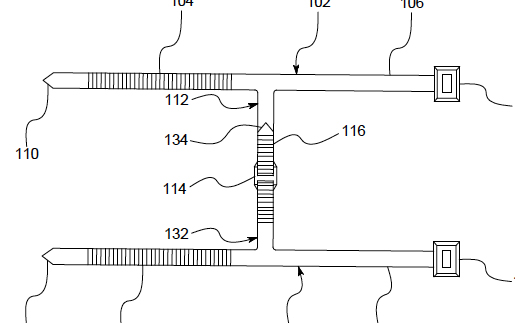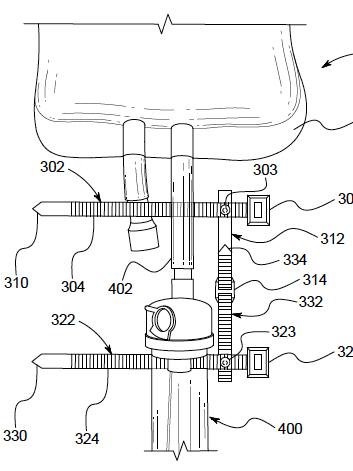
Home List your patent My account Help Support us
Secure Intravenous Units Effectively with the SPIKE GUARD
[Category : - HEALTH]
[Viewed 980 times]
The top of the IV drip structure has what’s called a “spike end” that is then linked up to an IV bag or bottle. It is that point of connection, as well as the one further down extending to the drip chamber, that have been problematic in Ms. Lannan’s experience. While other safety issues pertaining to IV therapy have been addressed to one degree or another, Ms. Lannan noticed that those particular points of connection remain as tenuous and unreliable as ever. As such, they continue to generate unpleasant, unsanitary and, considering that some of the treatment fluids in question cost over $20,000 per bag, costly surprises for her and millions of other healthcare workers and patients throughout the country.
Indeed, from messy spills of costly chemotherapy/immunotherapy/biotherapy fluids to safety-related complications that make remote IV therapy less viable and comfortable, Mrs. Lannan has witnessed the DANGEROUS and COSTLY consequences of this problem firsthand. Unfortunately, it is not uncommon for cancer patients and others who undergo IV therapy to feel frail and lightheaded. When such incidents occur as they are walking with an IV structure beside them, they may grab the tube for support and inadvertently disconnect it from the IV bag or bottle, the contents of which may proceed to spill, as Lannan’s patent application describes the hazard, “onto the patient, the furniture, the floor, the IV pump, and/or soaking the patient’s clothing.”
Testimonial from a healthcare worker:
"I have personally seen patients inadvertently grab IV tubing thus causing the medication to spill out of the bag, this poses a risk to patients and staff of being exposed to toxic and hazardous substances. I myself have accidentally disconnected a bag of blood resulting in a large amount of blood being spilled on myself and the patient and the surrounding area. Improvement in this area is greatly needed, the Spike Guard will address this concern and improve the safety in handling, administering and receiving hazardous medications and blood products. That is why I fully endorse Tracy Lannan’s Spike Guard."
Lynn Galvin, RN
Financial information
-- Looking for a license with royalties or an outright sale.
-- Invention is new and has yet to be marketed.
-- Patent-Pending Invention (Application # 16939314).
Enormous Market Opportunity:
The domestic IV therapy equipment market, currently valued at $2.7 billion, continues to grow steadily. Due to a number of powerful demographic factors, over the mid to long-term, domestic demand for such equipment is very likely to increase. Most significantly among these is the accelerated “graying of America”: In 1900, only one of every twenty-five U.S. residents was aged 65+, 120 years later, that proportion has skyrocketed to almost one out of six. Only twenty years from now, in 2040, one in every five Americans will be elderly.
Given the strong correlation between advanced age and the conditions that are treated by IV therapies, intravenous medicine is likely to become even more prevalent than it is today. Foremost among those conditions is cancer. In 2017, the last year for which United States Cancer Statistics (USCS, a division of the CDC) conducted its analysis, a total of 1,701,315 new cancer cases were reported across the country. Just seven years prior, in 2010, 1,529,560 cancer cases were diagnosed in the United States.
“The rising incidence of chronic diseases,” the analytical firm Markets and Markets observed with respect to the IV therapy equipment market, “…and the growing use of IV therapy in their treatment are expected to drive the growth of this market in the coming years.” Aside from cancer, some of the other prevalent chronic diseases that often involve treatment with IV fluids are heart disease, stroke, chronic respiratory diseases (CRDs) and diabetes. Collectively, those conditions affect over 75 million Americans.
The treatment of some of the most pervasive chronic conditions in the country, affecting tens of millions of Americans, relies at least partly on treatment with IV fluids and, consequently would stand to benefit from use of the Spike Guard.
 Patent publications:
Patent publications:No publication
Asking price:
Make an offer
Make an offer



[ Home | List a patent | Manage your account | F.A.Q.|Terms of use | Contact us]
Copyright PatentAuction.com 2004-2017
Page created at 2025-11-27 18:13:08, Patent Auction Time.
 Great invention
Great invention